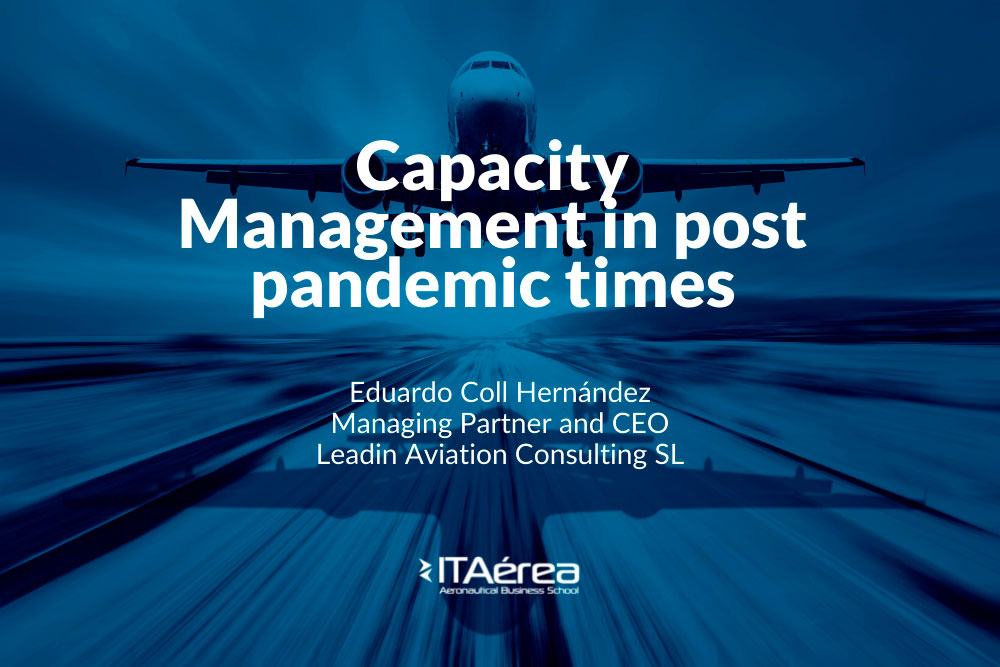
Capacity management in post pandemic times
News
As many airport followers, students or professionals well know, an active and continuous monitoring of the processing capacity is one of the key factors for a successful airport operation.
Regardless of the size and complexity, every airport requires a proper follow-up of the performance of its processors. The implementation of a capacity monitoring and programming tool to guarantee that the existing or future flows of passengers can be processed under an optimum level of service, must be considered in every airport operator’s management plan.
With the long-term perspective, the creation and continuous update of an airport master plan is considered a good (and necessary) practice to determine if the airport’s infrastructure is performing according to the expected demand of passengers, aircrafts, cargo and baggage and to define the necessary investments to accommodate such demand, with the defined levels of service and according to the applicable regulations.
Under special circumstances impacting the expected demand, in terms of volumes but also in the type and characteristics of the traffic (segmentation, fleet mix, design aircraft, etc), it is highly recommended to conduct a timely update of such master plan, as the balance between capacity and demand could have been impacted due to such unexpected changes.
Having a look to the short-term, capacity monitoring and planning is equally important. In this case, not only for a balanced and properly managed long term investment plan, as we just mentioned, but to have an efficient operational planning making the best use of the available infrastructure. This efficient operation, has a significant direct impact on very important parameters for the business model success, such as:
- Passenger experience
- Revenue generation
- Operational expenditures
- Stakeholders’ cooperation efficiency
In essence, a well-planned capacity monitoring system both for short term operational excellence and for longer term strategic and infrastructure development, is a paramount airport management tool for a profitable and successful performance.
In this unprecedent period of uncertainty and volatility we are living since the arrival of COVID-19 pandemic, the capacity of anticipation for the short-medium and long term operational and infrastructure planning has been totally disrupted due to the instability of the traffic behavior.
During the worst days of the pandemic, when lockdowns were the normal in most of the countries, traffic bottom-line and initial recovery patterns were a crystal ball. Under these circumstances, capacity planning was moved to a second line of importance, as obviously all efforts were focused on trying to understand how and when the traffic would be back.
After this initial period, domestic traffic launched the recovery, while international traffic started to grow as countries were raising traffic restrictions. Despite the appearance of the different variants, traffic has been recovering in different rates but in most world’s regions along 2021 and 2022.
In this context, on the way to the recovery of the pre-pandemic yearly figures, we are starting to see hourly and daily peak periods with even higher peaks than 2019 at some airports, with the respective consequences on the infrastructure.
Images with massive queues have been appearing on the news in the initiation of the summer season in Europe.
The sudden recovery within these peak periods have surprised most of European airports with insufficiently staff for certain key processes with the obvious impact on the queues and the subsequent hundreds of missed flights and complaints of passengers.
Even though in many of these cases, the underperformance has not been caused by a lack of infrastructure, but due to understaff processors (security, passport controls, check-in among other), such situation could have been avoided under a close monitoring of the required capacity to cope with the peak periods.
A proactive capacity planning should be the right management tool to negotiate slots with airlines for a smooth and balanced recovery of traffic.
Once the flights are programmed, the airport’s capacity team, with the right tools, can anticipate the necessary processors that need to be deployed and staffed with sufficient time to coordinate with all stakeholders at the airport.
If during stable periods, capacity planning is considered a strategic role in airports, during uncertain and unstable situations, as the one we are living nowadays, it becomes even more critical to avoid operational disruptions, underperformance, loss of revenues and impact on reputation.
Eduardo Coll Hernández
Managing Partner and CEO
Leadin Aviation Consulting SL
www.leadinaviation.com
Develope your professional skills with our Master in Aviation Management
CONTACT info@itaerea.com +34 902 505 501 TEACHERS TRAINING





